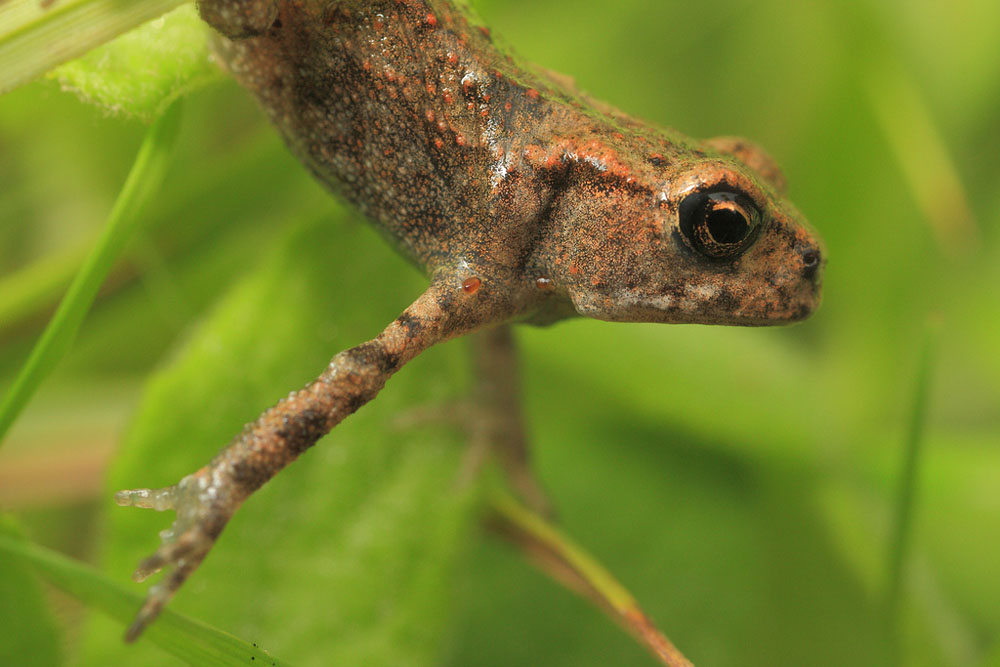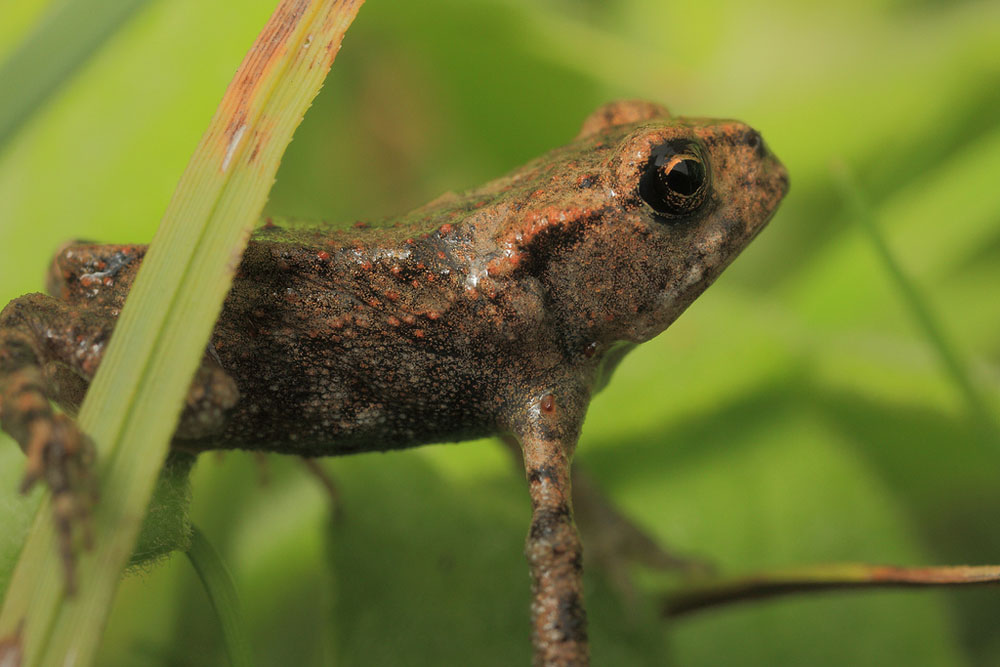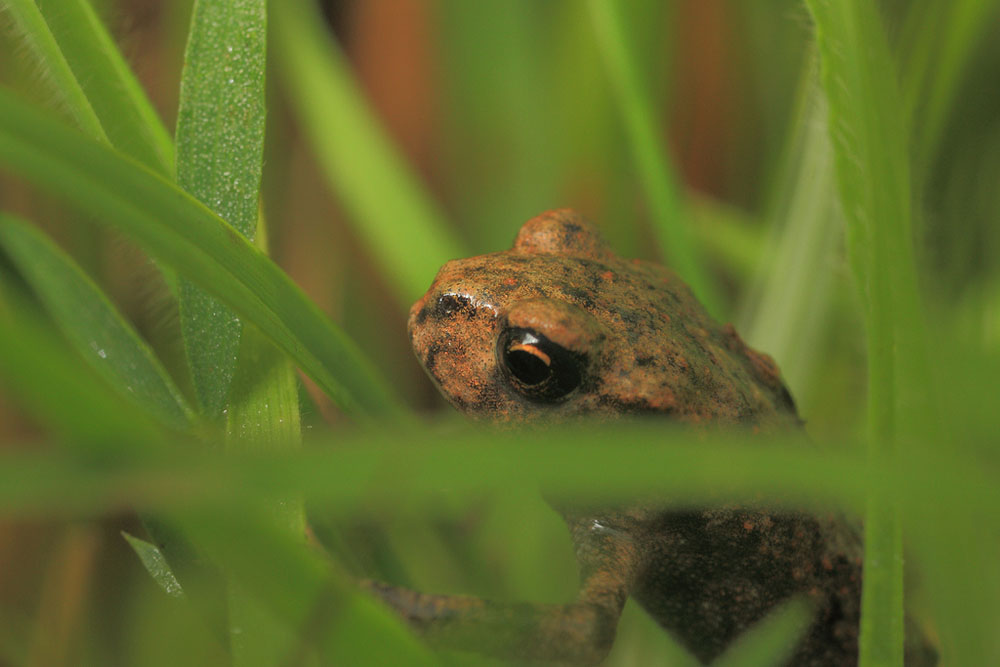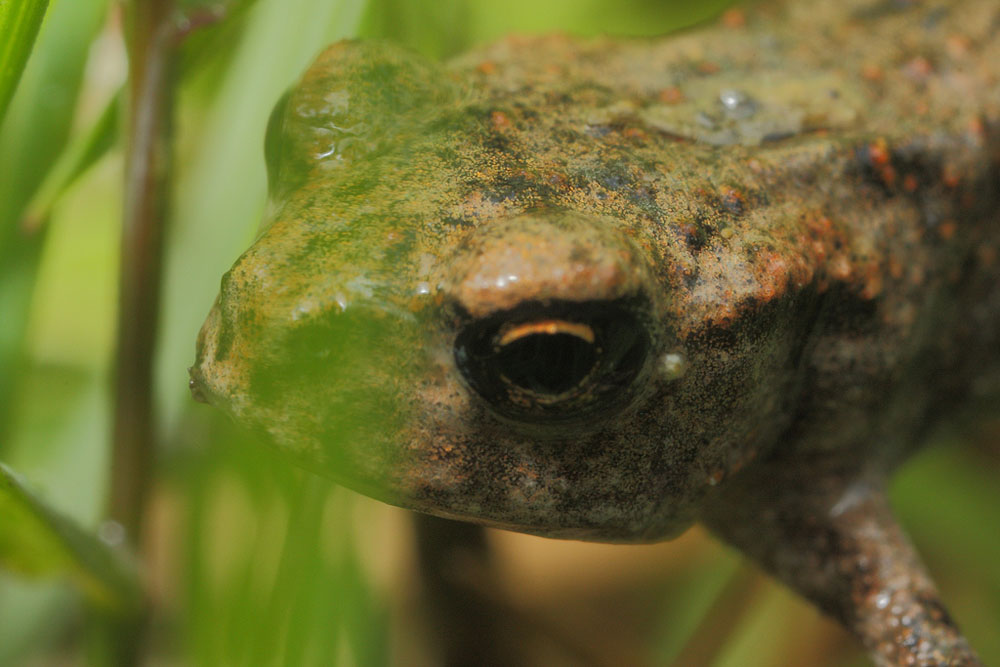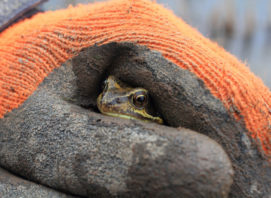Common Toad
Description: Strong and stout toad with great size variation. Has very wart skin, conspicuous eardrums and large parroted glands that are oblique if seen from above. Pupils horizontal and oval with copper-coloured eyes. Underside brownish, yellowish, reddish, grey or olive; uniform or with inconspicuous slightly darker or paler patches.
Habitat: Prefers sunny places for breeding, favouring still and unusually large and deep bodies of water, such as lakes and ponds, but also in rivers, streams or rarely in small and temporary puddles. There must be structures such as aquatic plants or overhanging branches to which egg strings can be attached. On land favours woods, but also meadows, gardens, parks and cultivated areas. During the day hides under dead wood or stones. Spends the winter in a burrow.
Notes: Common Toads are among the best known amphibians due to the widespread distribution and common status. Diet: insects, spiders and other anthropoids as well as worms and slugs. When faced with a predator, Common Toads lower their head and raise their hindquarters in a threat display. They can produce a copious white secretion from their skin and parotoid glands. Common predators are mustelids, crows, and grass snakes, as well as some kinds of flesh flies. These flies lay eggs into the head of the toad and the larvae burrow to the inside of the nose where they destroy the mucous membrane, bone and eventually the brain, which leads to death. Common Toads often return to their place of birth to breed, although many pairs occupy newly created ponds. Common Toads wander widely throughout the year between breeding areas and summer – and winter quarters. During warm, rainy nights in the breeding season, (in Britain from March to April) toads migrate in large numbers to their breeding sites. During this time, they are active night and day. The males are very enthusiastic. They wrap their limbs around anything that is soft and malleable (and thus resemble a female) , for example other amphibians, fish, dead animals or decaying parts of plants floating in the water. Sometimes balls with a single female and up to 15 males occur, and the female often drowns. Usually the male grasps the female just behind the front limbs and in that position the female deposits 3,000 – 8,000 eggs in a 3 – 5 m long string under the water. The eggs form a double row inside the string. The black tadpoles hatch after 2-3 weeks and can form huge swarms. They have a bitter substance in their skin which deters predators such as fish, but not the larvae of certain insects, such as dragonflies. After another 2-3 months the tadpoles reach 3-4 cm and metamorphose. The young toads are 7-10mm long and feed mainly on isopods and small insects.
Quoted from, New Holland, European Reptile and Amphibian Guide by Axel Kwet

